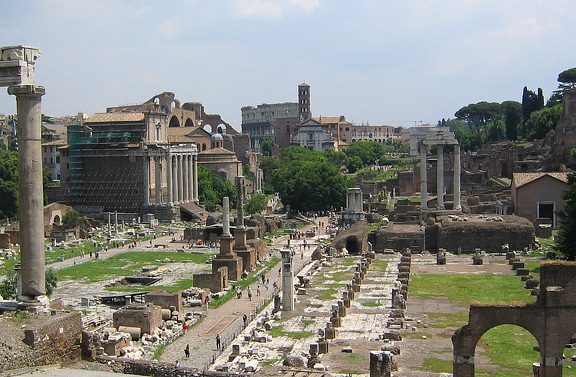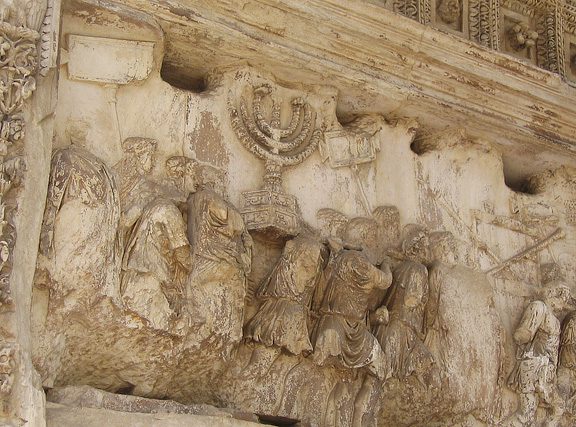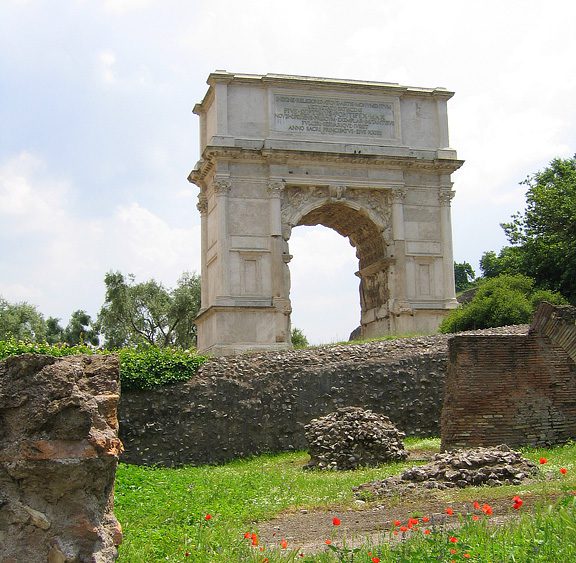In A.D. 70, the Romans conquered Jerusalem. They slaughtered the residents and torched the city. Before they destroyed the sacred Jewish temple, they looted it, taking its sacred implements back to Rome. One of the pieces they removed was a golden menorah that had given light to the inner sanctuary of the temple.
Not ones to be shy about their victories, in A.D. 82 the Romans celebrated the sacking of Jerusalem by building the Arch of Titus in the Roman forum. Inside of the arch they carved a scene of Roman soldiers carrying the holy menorah back to Rome.

In the last several centuries, if you were to visit Rome, you could see the Arch of Titus with its infamous menorah carving. It would look much as you might expect of something chiseled from rock.

But now we know that when the menorah was viewed by the Romans in the last decades of the first century, it was not the sandy brown color that it is today, but rather golden yellow. So reports a recent article in the New York Times: “Technology Identifies Lots Color at Roman Forum.” In the piece by Elisabetta Povoledo, we read:
“The Bible said [the menorah] was gold, but the monument, as it was seen for centuries, told us it was white,” said Steven Fine, the director of the Arch of Titus Digital Restoration Project and a professor of Jewish history at Yeshiva University in New York, which is sponsoring the project. “Isn’t it cool to be that much closer to the viewers of the first and second century?”
The findings were made possible using noninvasive spectrometry readings carried out on the arch this month.
“The advantage of this method is that it doesn’t harm the monument,” said Cinzia Conti, the state archaeologist responsible for the arch. The monument is not only an important part of Rome’s physical history but also “very significant for the Jewish community,” she said.
If you are a history buff, an archeology buff, and/or someone who cares about biblical history, you owe it to yourself to read Povoledo’s fascinating article.
If the original coloring of the menorah surprises you, you may not be aware that archeologists and art historians are saying that many ancient statues that we see as stone or marble colored were, in fact, painted. For an example of the difference this makes, check out this link. And if you want to see what ancient Rome really looked like before it was in ruins, check out this fascinating video. Here’s what the Arch of Titus looks like today:












